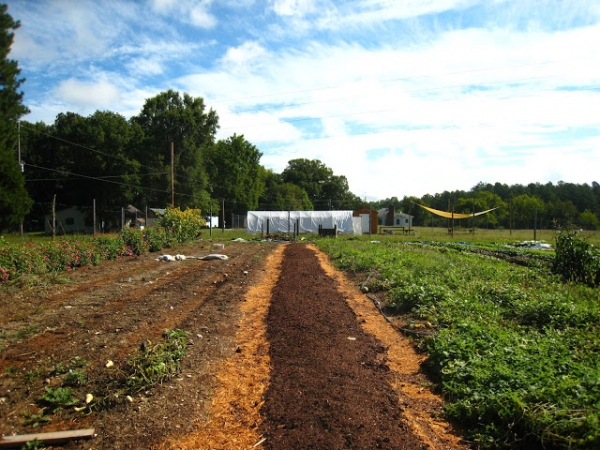
Beginning Farmer Asks:
We are in the process of setting up permanent beds for small scale CSA production (about 2 acres) and were wondering if you had any experience or suggestions related to using a spader for tillage in this type of system. We would like to leave the paths between beds untilled if possible. The idea is that the tractor tires would run down the paths.
Farmer Mentor Answers:
Interesting you should ask the spaded permanent bed question; I have been talking about that for years but have yet to see anyone actually pull it off. Seems like such a great concept.
I think the challenging parts would be shaping the bed once it is spaded and also weed management in the semi-permanent pathways. It depends on your soil type but you may find that you need to follow up the spader with a rototiller that would provide a more uniform bed surface; you could actually put little markers on the rear flap of the tiller to give you planting marks. I'm assuming once you get a bed tilled that all follow up work would be with hand tools (i.e. push planters, wheel hoes etc.). I think one thing to think about is the fact that spaded ground is pretty "fluffy" and this is where a rototiller could assist. Of course the rototiller would be undoing some of the gentler spader tillage but as long as soil moisture is good (not too wet/not too dry) that should be okay.
It really comes down to soil type. A challenge with the spader is that it is pretty aggressive tillage and some soils handle that well and some soils don't. I never liked to spade any ground more than once in a season at CASFS and we used the spader mostly in the spring for cover crop incorporation because spaded ground in the fall never took rain very well. I think the soil structure gets so broken up that it takes time to reestablish the water pathways. The one advantage in your favor is that the narrower spaders tend to run pretty shallow. You can always adjust depth too but they tend to work best at their deepest setting - and at their slowest speed - which is right around 0.6 MPH. I'm guessing the 3 foot spader would run maybe 8 inches deep? Another issue I could see on heavier soils is having drainage issues in the permanent pathways since that is where all the compaction will be - both from foot traffic and from tractor tires.
It would certainly be worth pursuing but I would be reluctant to give it a wholesale "thumbs up". I always thought that a little Kubota with a three-ft. spader would be the perfect fit for the down garden at the CASFS farm. If you do end up going this route you should consider the hydrostatic transmission. That makes spading much easier. You would only need a "B" series Kubota for a three-ft. spader. Spading really is a lot like double digging and if conditions and soil allow, spaders can leave seedbed tilth in their wake. Lots to consider!
If you’re interested to learn more about spader tillage and other cultivation tools visit
